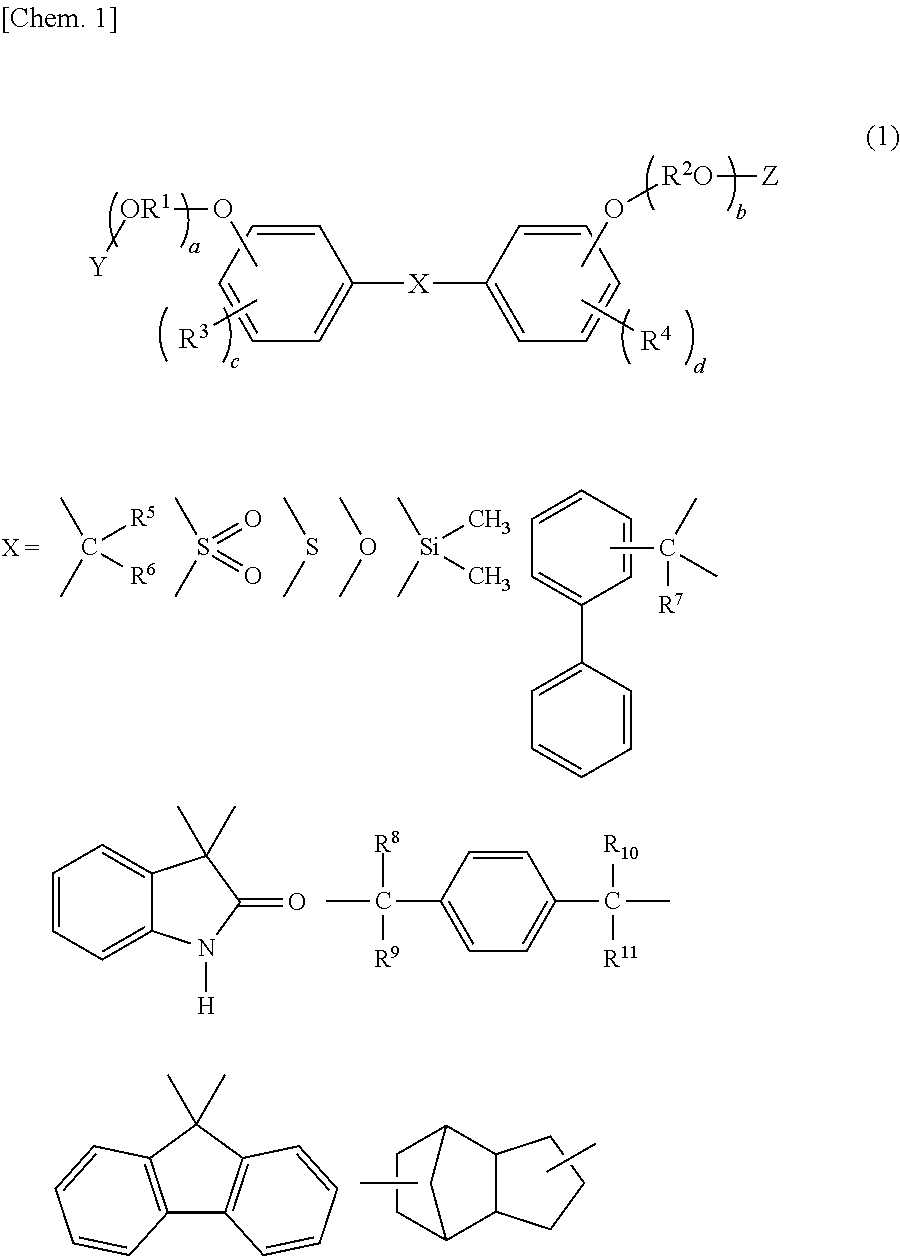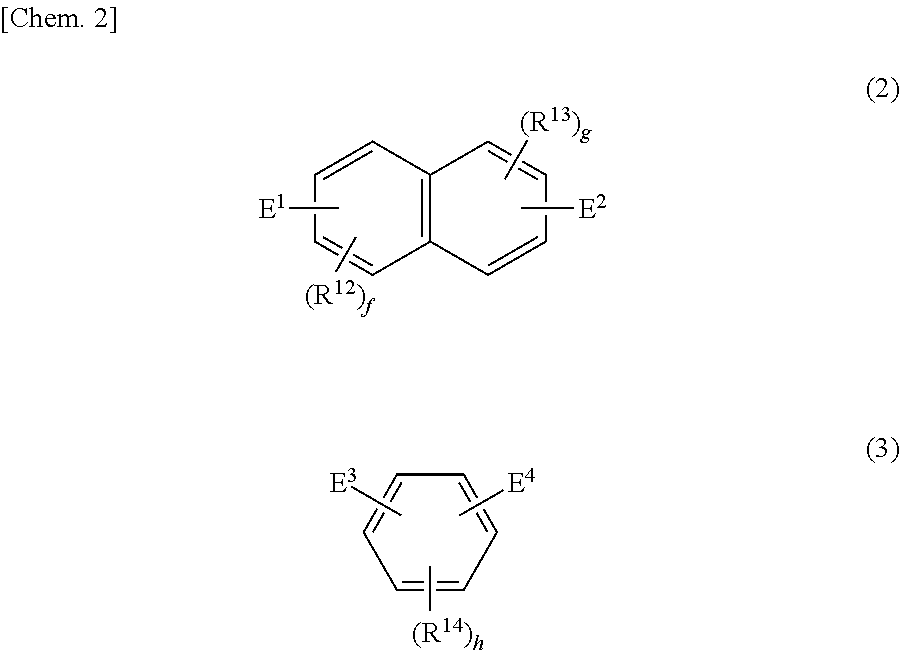Polyether ester composition, polyurethane resin composition, and optical material using the same
a technology of polyether ester and polyurethane resin, which is applied in the field of polyurethane films, can solve the problems of high water absorption rate of polymethyl methacrylate, read/write errors, and degradation of light-focusing accuracy and refractive index, and achieves simple and relatively inexpensive methods. high practical utility, high refractive index
- Summary
- Abstract
- Description
- Claims
- Application Information
AI Technical Summary
Benefits of technology
Problems solved by technology
Method used
Image
Examples
example 1
[0066]In a four-necked flask, 336 parts of diethylene glycol, 1,039 parts of SEO-2 (ethylene oxide 2-mole adduct of bisphenol S, manufactured by Nicca Chemical Co., Ltd.), 626 parts of phthalic anhydride, and 0.06 parts of tetrabutyl titanate were charged, and the resulting mixture was allowed to react in a nitrogen flow at 220° C. or 24 hours. A polyester polyol (PES1) obtained after the reaction was a yellow solid at room temperature and had an acid value of 9.23 mgKOH / g and a hydroxyl value of 107.7 mgKOH / g. The obtained results are shown in Table 1.
example 2
[0067]A polyester polyol (PES2) was obtained by performing the same procedure as in Synthesis Example 1 except that 2,167 parts of NEWPOL-BPE-20T (ethylene oxide 2-mole adduct bisphenol A, manufactured by Sanyo Chemical industries, Ltd.), 473 parts of dimethyl 2,6-naphthalene dicarboxylate, 301 parts of dimethyl terephthalate, and 57 parts of phthalic anhydride were used as raw materials. The PES2 was a yellow solid at room temperature and had an acid value of 0.08 mgKOH / g and a hydroxyl value of 102.0 mgKOH / g. The obtained results are shown in Table 1
example 3
[0068]A polyester polyol (PES3) was obtained by performing the same procedure as in Synthesis Example 1 except that 3,009 parts of NEWPOL-BPE-20T, 369 parts of isophthalic acid, 540 parts of dimethyl terephthalate, and 82 parts of phthalic anhydride were used as raw materials. The PES3 was a pale yellow solid at room temperature and had an acid value of 0.05 mgKOH / g and a hydroxyl value of 111.6 mgKOH / g. The obtained results are shown in Table 1.
PUM
| Property | Measurement | Unit |
|---|---|---|
| glass transition temperature | aaaaa | aaaaa |
| glass transition temperature | aaaaa | aaaaa |
| refractive index | aaaaa | aaaaa |
Abstract
Description
Claims
Application Information
 Login to View More
Login to View More - Generate Ideas
- Intellectual Property
- Life Sciences
- Materials
- Tech Scout
- Unparalleled Data Quality
- Higher Quality Content
- 60% Fewer Hallucinations
Browse by: Latest US Patents, China's latest patents, Technical Efficacy Thesaurus, Application Domain, Technology Topic, Popular Technical Reports.
© 2025 PatSnap. All rights reserved.Legal|Privacy policy|Modern Slavery Act Transparency Statement|Sitemap|About US| Contact US: help@patsnap.com



